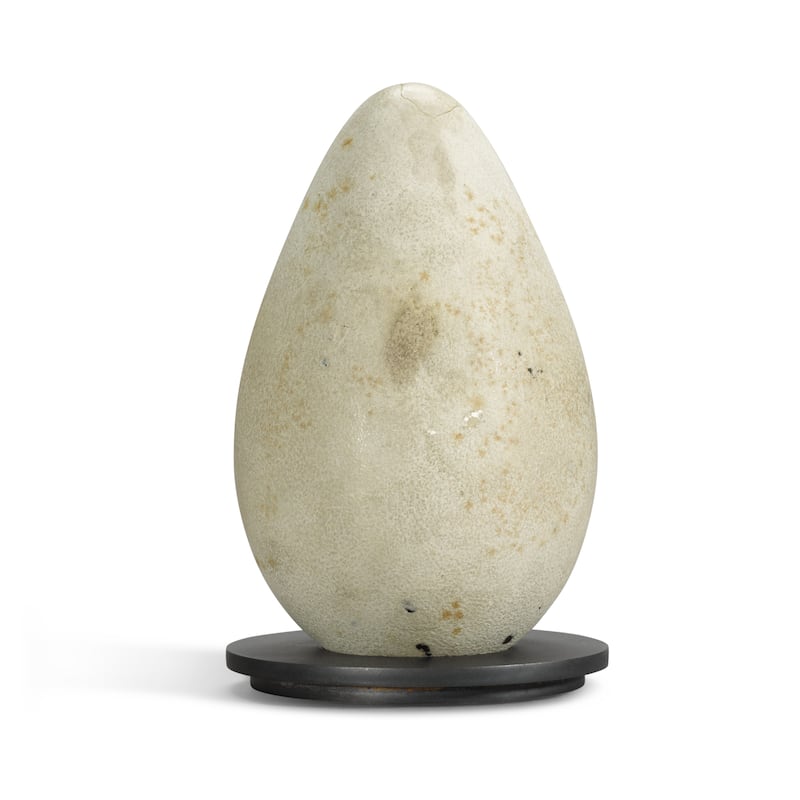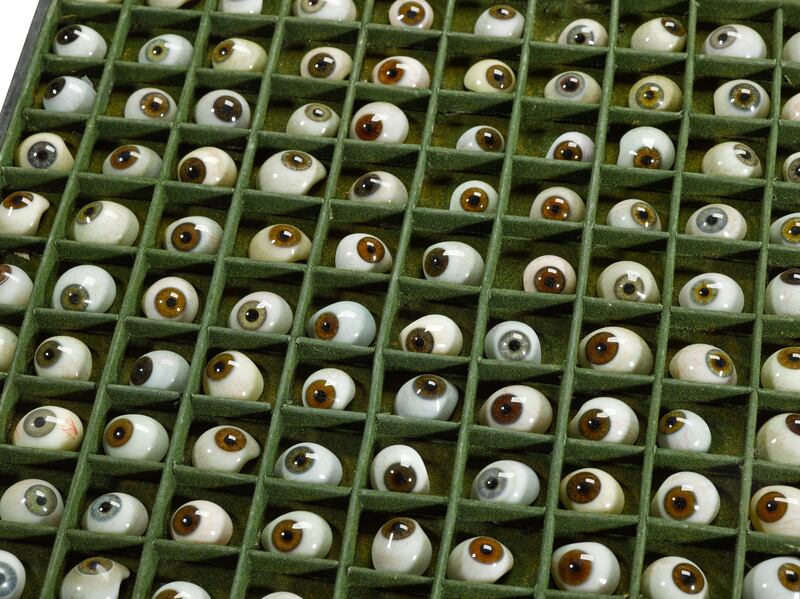From carved tusks and Irish elk antlers to mystic witches’ balls and glass eyes, the forthcoming sale of the collection of dealer and collector Emma Hawkins has some eye-opening curios and specimens. The online sale of 150 lots opens this Monday and ends January 19th.
Describing herself as a “collector of curiosities, oddities, art and an interest in the natural world”, Hawkins opened an antique shop in London’s Notting Hill at the age of 21. The daughter of a botanical artist and antique dealer, she had begun collecting at the age of 12 with her first purchase of a Polynesian paddle. This led her to a world “where you buy such beautiful things, meet such wonderful people and travel the world – and you can make a living from that”.
Heavily influenced by nature, her collection amassed over 30 years has quite a number of extinct species, which, she says “very much notates the fragility in this world”.
One of the top lots is a prehistoric pair of fossilised Irish elk antlers. Though neither Irish nor an elk, Megaloceros giganteus is today known throughout the world as the Irish elk, simply because of the numbers found preserved in Irish bogs – most notably Ballybetagh bog, south of Dublin. Recent research has found that these animals were actually deer – albeit the largest species to exist – and are closely related to the small fallow deer that reside at the Phoenix Park in Dublin today.
Some of these prehistoric animal crowns, having graced the walls of castles for centuries, have fetched jaw-dropping prices at auction in recent years. A set from Dromoland Castle sold through Adam’s of St Stephen’s Green for €47,000, while a pair from Newbridge House achieved £57,360 (inclusive of premium) through Christie’s in 2006.
[ Michael Viney on the history and demise of the great Irish elkOpens in new window ]
Determining their value is based on the span width, number of points or tines, and the level of damage, since the creature roamed the middle latitudes of Eurasia until somewhere between 10,000BC and 7,000BC. Antlers in the Sotheby’s sale are 197cm wide and are expected to fetch £20,000-£30,000 (€22,659-€33,989).
The top lot is Lady Cust’s Great Auk egg, from the extinct Great Auk (Pinguinus impennis) from Iceland, 1844.

Eggs from the Great Auk are considered to be among the most sought-after of all natural history objects as they are exceptionally rare. In Victorian times every surviving egg was listed and its whereabouts was recorded.
Sixty of them had been collected by 1844 when the aquatic, flightless bird – whose appearance fell between a puffin and a penguin – became extinct. The egg is estimated at £45,000 to £60,000, due to the fact that only four remain in private collections, with the remainder in museums.
Despite the eggs having longitudinal pear shapes so they would roll in tight circles – reducing the chance of rolling off a cliff edge – and few natural predators, it transpired that humans contributed to their demise. The slow awkward movements of the creatures allowed them to be easily caught for food and feathers, but also – and horrifically – for kindling in fires as their oily feathers were highly flammable.

Another remarkable egg is that of the Great Elephant Bird and dates from pre-17th-century Madagascar. Weighing up to a whopping 650kg at maturity, they were the largest bird that ever lived with some towering to over three metres in height. Used as food or to transport water until they became extinct 1,000 years ago, the egg in this sale – estimated at £8,000-£12,000 – is 150 times the size of a chicken’s.
A selection of taxidermy includes a rare Gyrfalcon (£5,000-£8,000); a giant armadillo (£8,000-£12,000); and a very rare specimen of a pangolin. Having gained global attention by taking the blame for the spread of Covid-19, these toothless solitary pangolins are the most trafficked mammal in the world as they are highly prized by consumers in Vietnam and China for their meat and unique scales (£2,000-£3,000).

You’d be hard pushed to find a more unusual lot than the cased set of 100 prosthetic handblown glass eyes in a variety of hues. Dating from the early 20th century, some have wear and marks. A shortage of glass eyes was noted by the United States Military in the first World War, when Germany was exporting just short of 400,000 pounds of glass eyes annually. After the outbreak of second World War, this export ceased and resulted in American glass being flown in a bomber to Britain to solve the lack of prosthetic eyes during the war (£1,500-£2,500).
And should you need one to ward off any ill fortune in 2023, the weird and wonderful catalogue also includes a large witch’s ball. The blown and silvered glass would have hung in windows in the 18th century to keep spells and evil at bay (£800-£1,200). sothebys.com




















